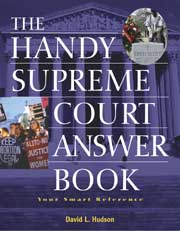
James Garfield
What occupation was Garfield attracted to as a youth?
Garfield wanted to become a sailor when he was a boy. He read stories about adventures at sea and thought that would be better than his poverty-stricken life. At age sixteen, he left home for the Cleveland docks. Rejected for a job because of his age, he worked on a canal boat called the Evening Star that was owned by his cousin Amos Letcher. He fell overboard numerous times. After one fall, he caught a fever and went home. His mother convinced him to resume his studies and further his education.
What did Garfield do after graduating from Williams?
He worked as a traveling preacher for the Disciples of Christ and then went back to Western Reserve Eclectic, which was now called Hiram College. He inspired countless students with his lectures on the classical languages. At the age of twenty-six, he became the president of the college.
Was Garfield the front-runner for the 1880 Republican nomination?
No, he was not even on the radar screen. Former President Ulysses S. Grant emerged as a front-runner, along with James G. Blaine of Maine, who had nearly captured the nomination four years earlier in 1876. Another leading candidate was John Sherman of Ohio, whom Garfield voted for and served as campaign manager. Garfield attracted attention with his speechmaking abilities when he nominated Sherman. The convention went through thirty-five ballots, but none of the three leading contenders--Grant, Blaine, or Sherman--could garner enough votes. Garfield began to emerge as a compromise candidate and supporters of Blaine and Sherman voted for Garfield as someone who could defeat Grant. On the final tally, Garfield received 399 votes to Grant's 306.
How close was the election of 1880?
It was a very close race, as the popular vote was nearly a dead heat. Each candidate garnered more than 4.45 million votes and each carried nineteen states during the election. But, Garfield won the electoral vote count 214 to 155.
Was Garfield the front-runner for the 1880 Republican nomination?
No, he was not even on the radar screen. Former President Ulysses S. Grant emerged as a front-runner, along with James G. Blaine of Maine, who had nearly captured the nomination four years earlier in 1876. Another leading candidate was John Sherman of Ohio, whom Garfield voted for and served as campaign manager. Garfield attracted attention with his speechmaking abilities when he nominated Sherman. The convention went through thirty-five ballots, but none of the three leading contenders--Grant, Blaine, or Sherman--could garner enough votes. Garfield began to emerge as a compromise candidate and supporters of Blaine and Sherman voted for Garfield as someone who could defeat Grant. On the final tally, Garfield received 399 votes to Grant's 306.
What ended Garfield's presidency so early?
A strange man named Charles Julius Guiteau ended Garfield's presidency by shooting him in Elberton, New Jersey, on July 2, 1881. Guiteau, a member of the Stalwart wing of the Republican Party, had supported Garfield during the presidential election. He somehow thought that his support merited him an appointment of an ambassador position. The administration politely rejected Guiteau, which sent him into a rage. He began stalking the president for a couple months and finally got the nerve to follow through with his murderous intentions. Guiteau claimed that he had killed Garfield to "unite the Republican Party and save the Republic."
From The Handy Presidents Answer Book, Second Edition by David L. Hudson, Jr., JD., (c) Visible Ink Press(R)
More than 1,600 things you never knew about our nation's leaders










 James Garfield
James Garfield